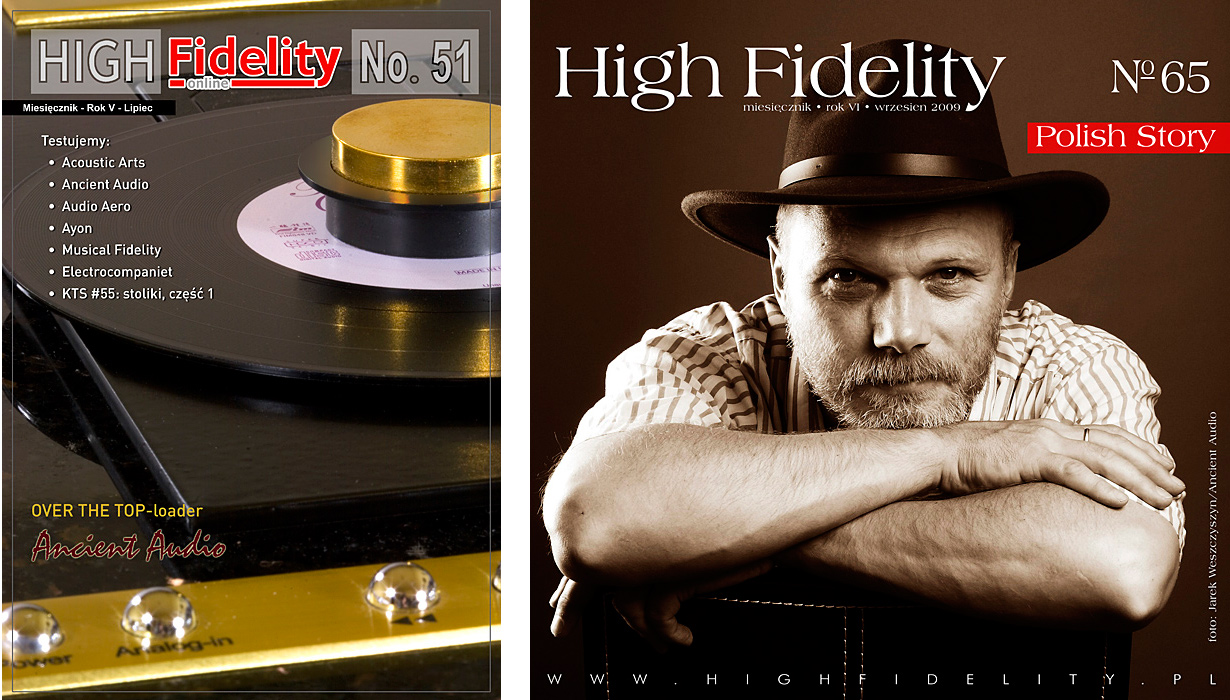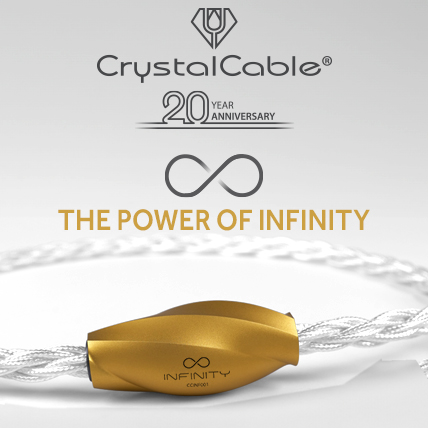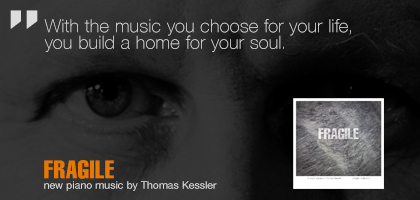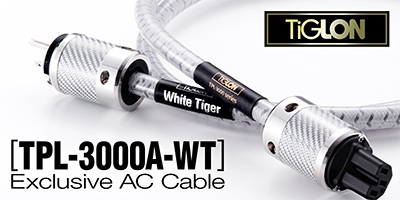 Contents
Contents
No. 257 October 2025
- COVER REVIEW: ANCIENT AUDIO Silver Grand Mono Mk II ⸜ power amplifier • monoblocks » POLAND • Kraków
- KRAKOW SONIC SOCIETY № 153: 30 years of ANCIENT AUDIO » POLAND • Kraków
- FEATURE ⸜ music & technology: HISAO NATSUME presents - In search for the lost great pianism Chopin tradition » part 2 (France) » JAPAN • Tokyo
- REVIEW: AUDIOPHONIQUE Classic AP 300D ⸜ power amplifier » POLAND • Pruszków
- REVIEW: AVATAR AUDIO Holophony No. 1 ⸜ loudspeakers • floor-standing » POLAND • Osowicze
- REVIEW: DIVALDI Gold PA One ⸜ integrated amplifier » POLAND • Kraków
- REVIEW: J.SIKORA Aspire ⸜ turntable (deck + tonearm) » POLAND • Lublin
- REVIEW: MB AUDIO CABLE Silver ⸜ analog interconnect ⸜ RCA » POLAND • Turza Śląska
- REVIEW: XACT N1 ⸜ LAN switch » POLAND • Wrocław


|
PATRIOTISM

One of the basic rules I have set even before the first issue of “High Fidelity OnLine” appeared, as that was the initial title of “High Fidelity”, was the continuous presence of gear manufactured in Poland. Regardless of their financial condition, without looking at connections and coteries, without any preconditions. A company needed to fulfill one condition: propose an interesting, finished and (important!) safe to use product. I hope the deal is clear – Polish manufacturers have a hard start, because their yearly budgets are usually smaller than a weekly budget from some bigger companies from abroad – the budget for office materials of course. So that was what I could do to help them. Sometimes there is more, sometimes less products worth describing, but the stream flowing through our pages seems quite constant. And that even after our magazine got international, when our English language page was introduced, which brought us to another level, as we started cooperation with the world’s biggest internet magazine, led by Srajan Ebaen, “6moons.com”. But to emphasize more on my country of origin, to make the Polish voice more audible, I decided to prepare, now and then, an issue devoted solely to Polish products. The first issue of that kind was #41 from September 2007, where the first part was Polish. The first fully Polish issue was #65 from September 2009, with Mr Waszczyszyn (Ancient Audio) on the cover, which – on a side note it won the 2009 Cover of the Year award. It turned out, that this time September is again the “Polish month”. 
Wikipedia defines “patriotism” as a love and devotion to a country or homeland for no other reason than being a resident there. The “Dictionary of Polish Language” adds one element to that: “Patriotism is the love to a homeland, with a readiness to make sacrifices for it”. And it should be clear – patriotism is related with an absolute, (almost) unconditional love for one’s home country. I think that we can feel what it all is about, especially given our history, and being taught patriotism since we were children. This is the reason that we prepared the cover for this issue with pride, without complexes, using elements of the Polish national and presidential flags. Testing Polish products for so many years, knowing their creators, designing such an issue, where so many products coming from Poland were accumulated, we can make some general statements. The first one is as follows: Polish manufacturers are able to prepare devices sounding as good as their counterparts from abroad, placed on a similar price level, or, usually, much better. Technologies used for their construction are classic, those are tubes and semiconductors, most of all in amplifiers, less so in CD players (Ancient Audio, Amplifikator, Amplifon, Amparo (Kustagon)), but sometimes there are hi-tech companies, like for example Excentric Digital with a fully digital amplifier. But this is a rarity. Most companies manufacture loudspeakers. From experience I must say, that this comes from the belief, that loudspeakers are easy to design, and that a computer software can do that. But this experience tells me also, that this is not true, this may be the most grave mistake of audio manufacturers, including the Polish ones. And finally cabling and power related things – here we are really strong, and the market has many products to offer. Like I say – Polish devices sound good or very good. Their craftsmanship is worse. Usually their enclosures are from the temporary kind, far from the professional ones. And this is the moment, the companies usually take on water. Going from a hobby product to a series production (like 10 units and more) is a change needing money, a good exterior designer, and a subcontractor company able to make this enclosure. Those elements rarely come together, this is why some companies stay behind in the starting blocks forever, even when offering very interesting devices, like the mentioned Kustagon. And the final thing – behind the companies I am talking about, there are very interesting people, passionate, and at the same time brilliant specialists, people with PHDs, experience in research, musicians, electronics specialists, computer scientists. And most of all people listening to music, for whom audio is the come true of their biggest dreams – the need to listen to music the way the composer, performer and audio engineer intended it to hear. And this makes the polish market so interesting. 
I talked about patriotism – yes, I am a patriot. First of all a local patriot – patriotism includes also so-called „small motherlands” – with mine beloved Cracow and Bobowa. I was born in Cracow and my mum, I live here meanwhile my family comes from Bobowa –the property there my great grandfather received for taking part in the campaign from 1920 and the wounds he got during it, from the family Długoszowski, local heirs at that time, my great grandfather there (who, unfortunately, died of those wound soon afterwards). So I will support Polish products and Polish manufacturers, whenever possible. Remembering however what I wrote in the beginning: the company has to propose an interesting product. There is no reduced fare in this regard. It is not „good, because Polish”, but „good, Polish” („good and Polish” throws on the patronizing look which we do not need here). And that is it. If he is good and Polish, the joy is double. However in doing there is no place for mediocrity, even if Polish. This is falsely perceived patriotism, its caricature, and in the longer perspective dangerous. I will say more – it is even not even about the mediocrity, but about a product not ready for sale, or an ordinary, average, usual one. We will not impress anybody with such, we will not get the “added value”, which is equally worth in audio products, as the basic value, resulting from building, finish and sound. This could only do harm to the company, because we will assure her that it does well, and we will block her development. I understand, that for many of them this is like a “beta-test”, on the basis of which they can prepare a better product. This is acceptable, under the condition that “the entry” product is already worth it, and that this is not a test “on the order”, a paid one . I had such proposals – a test, even without publication, devices for a concrete reward. I always refuse such cases, politely, but firmly. If there is a test, then it is a test – for good and bad. 
Talking about patriotism, we cannot forget, that “patriotism is opposed to nationalism, being only such attachment to the motherland, only such solidarity to the own nation, where there is no hostility towards other, different nations, neither desire humiliation, and the national pride does not become transformed in megalomania.” (after Encyclopedia of Gazeta Wyborcza). This dependence between pride and respect is captured best by the dictionary of foreign languages terms by Władysław Kopaliński (Warsaw, 1967), which states: “patriotism – love to homeland, own nation with a readiness to make sacrifices for it, but with with the acknowledgement of the laws of different nations and respect for them; look up nationalism.” And let us keep this as the valid description – let us be proud about Poland, but let us also not forget about the fact, that others are also proud of their countries. And for some the term “homeland” is an old-fashioned term, as in the modern world adherence to ideas, opinions, living place, religion, and similar things is more important, and those “cosmopolitans” are also worth our respect. Only such patriotism will be full and “complete”. And the continuation of that will be the reading of tests in this, Polish edition of “High Fidelity”. Halide Design S/PDIF Bridge 
I spent the last few days testing DACs for “Audio”, from every possible price level, up to 12000zł. There were more than a dozen of devices, and I decided to describe twelve. One of the more important features of modern DACs is the USB input. More and more people use a computer as the sound source, and some of them want to use it for high quality playback. Therefore there is a migration from mp3 files, compressed and completely useless in the real world of music, towards CD rips, uncompressed as WAV or lossless compressed as for example FLAC. Going further – some of those people search the net for hi-res files, and build their collection based on those. |
But regardless of how it is in a particular case, the basis remains the same: a computer is a kind of “player”, or “library” (unless we have network storage, then it serves just as a processor and player). It is a powerful tool, but having one flaw: we need to get the signal out of it somehow. The easiest way is to use the mini-jack or RCA analog output, which is built in almost all computer sound cards. But those of you, who went through this stage know, that it somewhat like preparing a fantastic dinner, use the finest and most tasty ingredients, have a splendid recipe and fry everything using used vegetable oil from McDonalds. It makes no sense. 
To have it work, the signal has to be sent out of the computer in a digital form, and be decoded outside of it, in a D/A converter, bypassing the built-in sound card. Some computers are equipped with a FireWire port – this is the most advanced port of its kind, fast, stable and allowing to send 24/192 signals without the need to make any workarounds. Unfortunately there are almost no DACs equipped with such an input, with the notable exception of Weiss Digital Audio. So the widely used standard is the USB link. I’ll just remind, that the USB port was created to transfer data, and not music. Hence the enormous jitter it introduces. Various companies try to deal with it in different ways, most commonly re-clocking the signal in the DAC, upsampling it, etc. And usually it works just fine. Unfortunately re-clocking does not solve all problems, it is just a patchwork. Hence the idea of Wavelength, and then other companies (like Ayre) to make the USB receiver work in asynchronous mode. Among the DACs I tested only two were equipped with this solution, Wavelength and Arcam rDAC. The other problem I had to face, was the lack of the ability to decode signals greater than 16 bits and 48 kHz. This is a limitation of older USB receivers. And even if the DAC was nice, if it sounded great using the RCA S/PDIF input, it was bad, or very bad, with the USB – please look at the test of the DacMagic Cambridge Audio. 
This is the reason I looked around for a solution, that would alleviate all my problems. As it turned out, the market offers something, that is a perfect solution: USB-S/PDIF converters. Making the research, I chose a few companies, which products I found interesting, and among those, the most intriguing was the American company Halide Design. It is small, easy to use, and offers everything I hoped for, except for playing files with a sampling frequency of 192 kHz or more. Their only, to date, product, named Bridge, comes in a small, white, nice box. Inside we find the operating manual and the device itself, with the USB cable affixed to it. The latter does not look very technologically advanced and it would be nice, if we could exchange it for something else. But then we would have to use a mini-USB plug, and probably, the manufacturer wanted to minimize the amount of contacts. The device itself is tiny, smaller than half of a ball pen, and has a diameter of a thin marker. It can be terminated with a BNC or RCA Bullet Plug Silver, as was mine. It suffices to plug the bridge into one of the USB ports of the computer on one side, and the RCA input of our DAC and it works. The device is installed automatically, and we do not have to do anything else. Why the Bridge? Because it is a very technologically advanced product and it is small. The company describes its features as follows: If we use a high class DAC, which does not have a good USB input, and we have lots of music on our computer, then owning it is a must. I recommend it!!! Everything-but-the-box 
Many times, when I think, that everything has been already invented in audio, that I saw everything, I run into something, that turns my self-confidence upside down, and brings an element of uncertainty and surprise to the way I see the branch. That was the case, when in the “Stereo Sound” I saw (and ‘saw’ is the best description – I do not know Japanese) the loudspeakers of the company Everything-but-the-box. Bizarre enough to draw my attention and quickly appreciated also in Europe. But the Japanese got completely crazy about them. Those are small loudspeakers, perfectly handcrafted, they could be the master for others and have almost no classic cabinet. Built around the concept of a sphere, or a sphere and a small baffle, they are finished with car varnish, available in all possible colors. The class of varnishing is better than in cars – I know, I saw that and I appreciate it. Even better, some elements can be finished using real leather, and the metal details are gold plated, chrome plated, etc. The number of combinations is incredible. Still the external design, regardless how good it is, must be subdued to the sound, otherwise we get a ‘designer product’, which is used only by interior designers, who do not care if it plays at all. The loudspeakers from Everything-but-the-box are different – oh, how different they are! When I listened to them for the first time, in Munich, during the High End 2010, I could not believe, that something so beautiful, so different, can sound so well and so “normal”. No freaking out with the sound, stretching it or something like that – just plain good sound. I mentioned Japan and Asia – there those loudspeakers are especially regarded. This is surprising, given their country of origin – Bulgaria. When I learned, where they are manufactured, I almost choked, because I did not associate that country with audio, especially high quality audio. I could be wrong however, and I apologize upfront for my ignorance! I could have verified it myself after seeing them in “Stereo Sound”, but I did not do it, as I thought, they are an Italian or Japanese product. But I will catch up – because the company will be represented in Poland starting September 1st, and next week, after returning from IFA Berlin, I am already appointed to have a closer look at the models Terra and Pluto. Probably one of them will be tested for “High Fidelity”. 
October plans As usual it turns out, that not all products I announced for the October issue, named “Toy Story”, will reach us, but we do also know, that others will be here in their place. And those will maybe be even more interesting:
Wojciech Pacuła |
About Us |
We cooperate |
Patrons |
|
Our reviewers regularly contribute to “Enjoy the Music.com”, “Positive-Feedback.com”, “HiFiStatement.net” and “Hi-Fi Choice & Home Cinema. Edycja Polska” . "High Fidelity" is a monthly magazine dedicated to high quality sound. It has been published since May 1st, 2004. Up until October 2008, the magazine was called "High Fidelity OnLine", but since November 2008 it has been registered under the new title. "High Fidelity" is an online magazine, i.e. it is only published on the web. For the last few years it has been published both in Polish and in English. Thanks to our English section, the magazine has now a worldwide reach - statistics show that we have readers from almost every country in the world. Once a year, we prepare a printed edition of one of reviews published online. This unique, limited collector's edition is given to the visitors of the Audio Show in Warsaw, Poland, held in November of each year. For years, "High Fidelity" has been cooperating with other audio magazines, including “Enjoy the Music.com” and “Positive-Feedback.com” in the U.S. and “HiFiStatement.net” in Germany. Our reviews have also been published by “6moons.com”. You can contact any of our contributors by clicking his email address on our CONTACT page. |
 



|
   |
main page | archive | contact | kts
© 2009 HighFidelity, design by PikselStudio,
projektowanie stron www: Indecity










